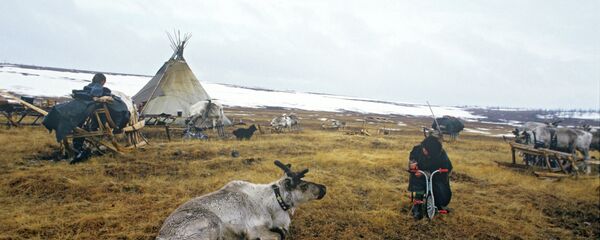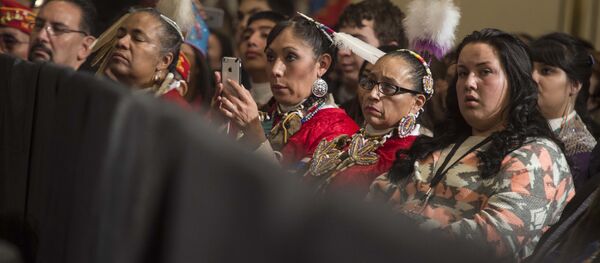"There's no hall of fame for Native Americans, and I think that there should be," James Parker Shield, a member of the Chippewa Tribe and chief executive of the Native American Hall of Fame, recalled thinking a decade ago, Indianz reported. "I wanted to ensure that the United States doesn't forget the contributions of these Native Americans."
The Hall of Fame aims to showcase the accomplishments of Native people separately from the other awards and honors they receive. To be inducted, you must either be enrolled in a federally recognized Native American or Alaskan Native tribe, part of a state-recognized tribe or have verifiable Native ancestry as well as demonstrable strong ties to the Native community in question, the organization's website notes.
Sorry Elizabeth Warren, this one's not for you, either.
"Like all halls of fame, it calls attention to certain kinds of extraordinary people who provide role models and opportunities to think about the world in which those folks lived and acted," Harvard University professor of Indigenous Studies Phil Deloria said earlier this year when the finalists were announced. "It starts conversations; it establishes aspiration."
Shield told Indianz he pushed to make the hall as inclusive as possible. "We didn't want an overrepresentation of any one particular tribe," Shield said, trying to avoid a "popularity contest."
The honorees come from 10 tribes and represent eight categories of accomplishment. Six are women.
The induction ceremony was held October 13 at the Phoenix Indian School Memorial Hall. However, five of the 12 recipients were no longer living, and so their honors had to be collected by relatives. Each inductee's award presentation was accompanied by a short video about their life and accomplishments, Indian Country Today noted.
Some of the most prominent inductees were Vine Deloria Jr., an author, theologian, historian and activist from the Standing Rock Sioux tribe whose scholarly work aimed to rebut scientific racist theory about Native people. He is well known for his 1969 book "Custer Died for Your Sins: An Indian Manifesto." He died in 2005, and his award was accepted by his son, Phil.
John Herrington from the Chickasaw Nation was the first enrolled citizen of a Native nation to fly into space, then becoming a science educator and advocate of potential contributions by indigenous knowledge to the modern sciences.
Lori Piestewa, from the Hopi tribe, was the first Native American woman in history to die in combat while serving in the US military. She was also the first woman killed in the Iraq War, during an ambush in the southern city of Nasiriyah, in the opening days of the war.
Eloise Cobell/Yellow Bird Woman was inducted for leading the class action lawsuit Cobell v. Salazar, which exposed the US government's mismanagement of money it claimed to be holding in trust for US indigenous nations.
The night featured performances of indigenous song and dance as well as addresses by various speakers about different aspects of US indigenous history, including Cherokee/Choctaw singer Martha Redbone, who sang about the Indian boarding school era, when Native children were sent to boarding schools designed to "kill the Indian and save the man," suppressing their indigenous languages and religions and educating them in Western, Christian beliefs.
"My ancestors should also be honored here," said Hall of Fame inductee Lionel Bordeaux, president of Sinte Gleska College on South Dakota's Rosebud Indian Reservation. "Our ancestors left us a challenge: be who we are instead of what others want us to be."




